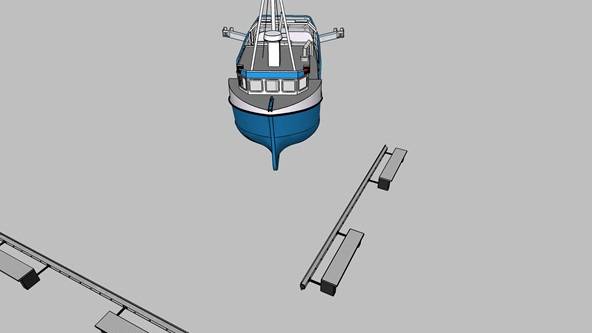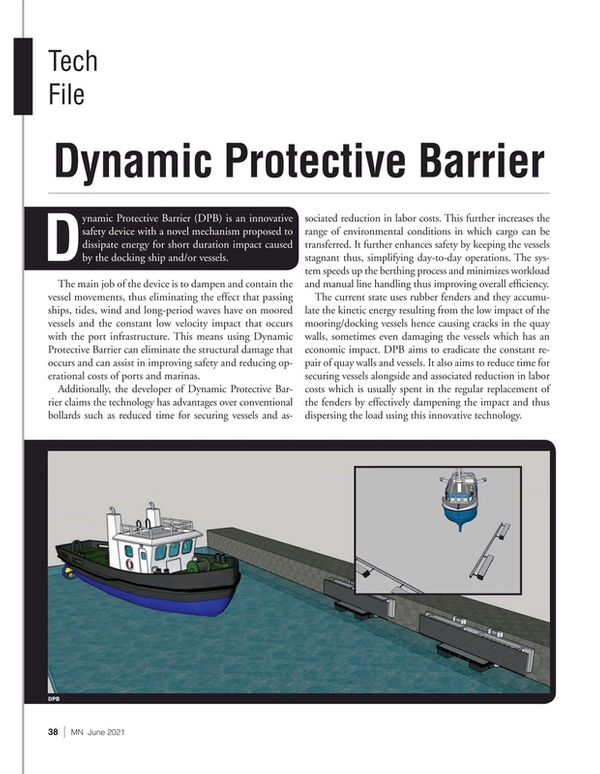
Tech File: Dynamic Protective Barrier
Dynamic Protective Barrier (DPB) is an innovative safety device with a novel mechanism proposed to dissipate energy for short duration impact caused by the docking ship and/or vessels.
The main job of the device is to dampen and contain the vessel movements, thus eliminating the effect that passing ships, tides, wind and long-period waves have on moored vessels and the constant low velocity impact that occurs with the port infrastructure. This means using Dynamic Protective Barrier can eliminate the structural damage that occurs and can assist in improving safety and reducing operational costs of ports and marinas.
Additionally, the developer of Dynamic Protective Barrier claims the technology has advantages over conventional bollards such as reduced time for securing vessels and associated reduction in labor costs. This further increases the range of environmental conditions in which cargo can be transferred. It further enhances safety by keeping the vessels stagnant thus, simplifying day-to-day operations. The system speeds up the berthing process and minimizes workload and manual line handling thus improving overall efficiency.
The current state uses rubber fenders and they accumulate the kinetic energy resulting from the low impact of the mooring/docking vessels hence causing cracks in the quay walls, sometimes even damaging the vessels which has an economic impact. DPB aims to eradicate the constant repair of quay walls and vessels. It also aims to reduce time for securing vessels alongside and associated reduction in labor costs which is usually spent in the regular replacement of the fenders by effectively dampening the impact and thus dispersing the load using this innovative technology.
 (Image: Dynamic Protective Barrier)
(Image: Dynamic Protective Barrier)
Read Tech File: Dynamic Protective Barrier in Pdf, Flash or Html5 edition of July 2021 Marine News
Other stories from July 2021 issue
Content
- Interview: Ben Reed, Managing Director, HamiltonJet page: 12
- The Future of MASS is Drawing Closer page: 16
- AI is Pivotal for the Future of the Autonomous Shipping page: 17
- Marine Autonomy: The Future is Being Revealed page: 20
- Moving Forward with Emissions - Is it Tiers, Tears or Fears? page: 26
- Electronic Navigational Charts: An Update and Some Issues page: 30
- Tech File: X-Series Waterjets page: 36
- Tech File: Dynamic Protective Barrier page: 38


